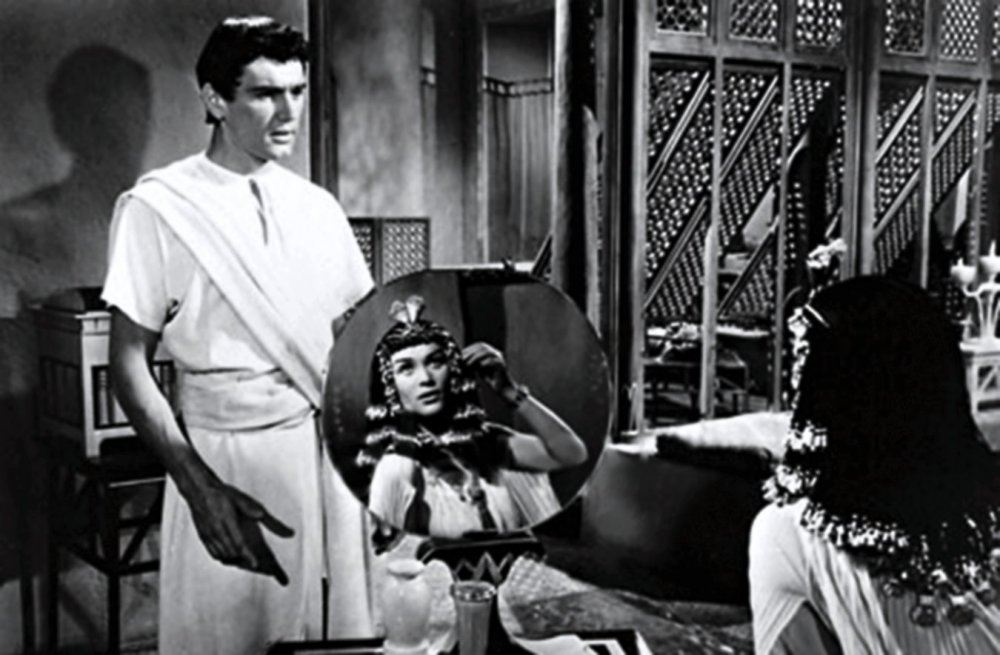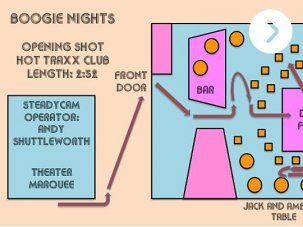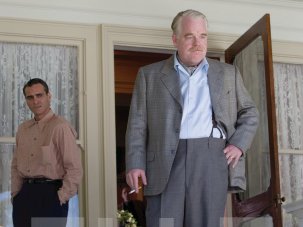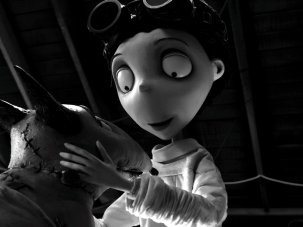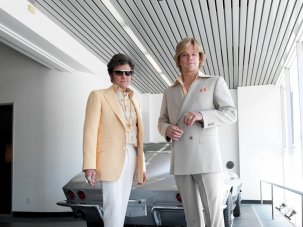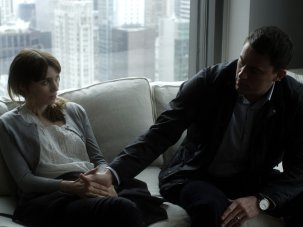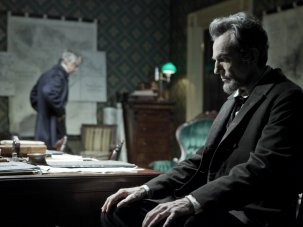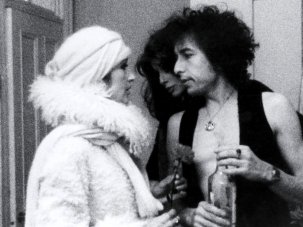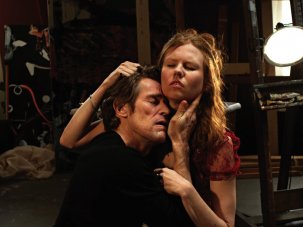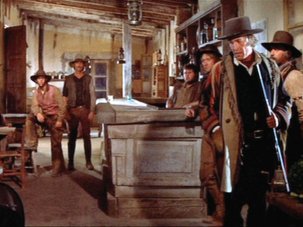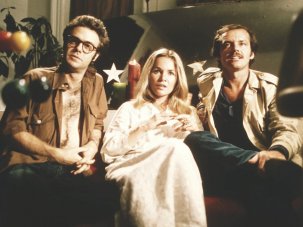Michael Curtiz’s The Egyptian – a 1954 CinemaScope epic about an itinerant physician’s brushes with pharaonic power – is unlikely to appear on anybody’s top ten list. Yet, while watching Twilight Time’s splendid Blu-ray, I was struck by the intelligence of Curtiz’s mise en scène, notably during a sequence in which the physician Sinuhe (Edmund Purdom) talks to a courtesan, Nefer (Bella Darvi), with whom he has fallen in love.
Nefer, seated before a mirror, applies makeup while gazing at her own reflection. Sinuhe, initially seen at frame left, walks towards Nefer, stands behind the mirror (which now partially obscures him from view), and grabs hold of it. We thus see Sinuhe embracing not Nefer, but rather a mirror in which her reflection is visible… visible, that is, to Nefer and the camera but not to Sinuhe.
Curtiz here suggests two things: that Sinuhe is in love less with Nefer herself than with her ‘image’; and that Sinuhe has allowed his identity to be obscured by his obsession with Nefer. This shot is constructed entirely for the camera’s benefit, allowing the film’s viewer to understand something not perceived by its protagonist. Indeed, the fact that Sinuhe fails to comprehend the nature of his desire is exactly Curtiz’s point.
Classical Hollywood mise en scène can best be understood as a form of pointmaking in which various elements comprising the onscreen world are so meticulously organised that they function as a critical tool. Yet these stylistic practices, once commonplace in popular cinema, have become all too rare. One certainly finds no evidence of them in the oeuvres of such supposedly ‘important’ figures as Steven Soderbergh and Paul Thomas Anderson (the modern equivalents of Fred Zinnemann and Stanley Kramer), and will be far more likely to discover specific points being made through the juxtaposition of actors and decor in the films of challenging Asian and European auteurs such as Hou Hsiao-hsien and Jean-Luc Godard (see especially the middle section of Film Socialisme, 2010), as well as several US directors who, far from being considered classicists, are usually categorised as quirky, offbeat or cult.
It could be argued that modern-day directorial control has led to a lack of urgency concerning what happens before the camera
A model example can be found in Tim Burton’s Sleepy Hollow (1999). Shortly after arriving in the eponymous town, Ichabod Crane (Johnny Depp) is told the story of the Headless Horseman by Baltus Van Tassel (Michael Gambon). Burton stages the scene by cutting between Crane sitting before a bookcase full of neatly arranged volumes, and Van Tassel standing next to a fireplace. This visual opposition of books and fire exactly parallels the thematic opposition between Crane’s rationalism and those supernatural forces Van Tassel is referring to, the way Burton’s camera remains still when focused on Crane while moving into the flames during shots favouring Van Tassel indicating which of these worldviews will ultimately hold the greater attraction.
Or consider David Cronenberg’s A Dangerous Method (2011), seemingly structured around the dispute between Sigmund Freud (Viggo Mortensen) and Carl Jung (Michael Fassbender) yet more concerned with a conflict (involving ideas familiar from Cronenberg’s earlier work) between two characters who never meet: Sabina Spielrein (Keira Knightley), who insists on the need to erase distinctions between masculinity and femininity (“Only the clash of destructive forces can create something new”) and Otto Gross (Vincent Cassel), whose philosophy is “never repress anything”.
During their discussions, Spielrein and Jung are often shown walking through exterior locations as the camera tracks ahead; when these characters sit down, they do so on a public bench, with pedestrians in the background, or on a gliding boat. Spielrein is associated with movement (our first and last glimpses of her involve moving vehicles) and windows, while Jung’s debates with Gross (who is initially seen standing motionless outside the clinic) are filmed mostly in interiors by an unmoving camera carefully positioned to ensure that windows are not visible (except briefly during shots favouring Jung); the one conversation that occurs in an exterior setting shows Gross leaning against a decaying grey wall. Cronenberg’s opposition of stillness and movement, stagnation and progress, suggests that the liberation desired by Gross is really a form of deathly masculine oppression, whereas that urged by Spielrein has genuinely radical implications.
The films of Martin Scorsese and Spike Lee also belong to this mise en scène tradition, as do those of Steven Spielberg and Clint Eastwood. Yet it is surely significant that all these directors have been active since at least the 1970s (stretching the point in the cases of Burton and Lee, who made their first shorts during that decade). North American filmmakers now enjoy greater freedom than their studio-era counterparts, yet it could be argued that directorial control has led to a lack of urgency concerning what happens before the camera. If John Ford shot only what he intended to use (sometimes holding his cap in front of the lens to indicate where he required a cut), younger directors now tend to shoot from a variety of angles, knowing their final decisions will be made in the editing room, where scenes can be patched together from footage that has, for all intents and purposes, been taken at random.
This is not an argument against rapid cutting per se. Many cinephiles fetishise lengthy takes, which they see as opposed to the increasingly fragmented editing of modern Hollywood. Yet the bravura long takes of Anderson’s Boogie Nights (1997) and Michelangelo Frammartino’s Le quattro volte (2010) only make sense in the context of a cinematic culture where they are the exception rather than the rule. They function as (to borrow Herbert Marcuse’s phrase) ‘bad utopias’, deviations from an aesthetic norm that itself remains unchallenged and to which they bear an essentially parasitic relationship.
The mise en scène practices I favour have less to do with the length of the take than with the weight of the image. One of the finest films I saw last year (inexplicably still unreleased in the UK) was Philippe Garrel’s Un été brûlant (A Burning Hot Summer, 2011), which revisits themes and obsessions Garrel has been exploring since the 1960s yet seems fresher than almost anything else in modern cinema. Constantly in this work, one feels that the camera must be here and nowhere else in order to make the points Garrel wishes to make, the result being a contradictory mixture of inevitability and unpredictability (the image’s weight being precisely what enables a new simplicity to emerge). Perhaps this is where the spirit of John Ford and Michael Curtiz now resides.
-
Sight & Sound: the March 2013 issue

Gael Garcia Bernal in Pablo Larraín’s No, plus Caesar Must Die, Somersault, Pier Paolo Pasolini and Montgomery Clift.
-
The Digital Edition and Archive quick link
Log in here to your digital edition and archive subscription, take a look at the packages on offer and buy a subscription.




